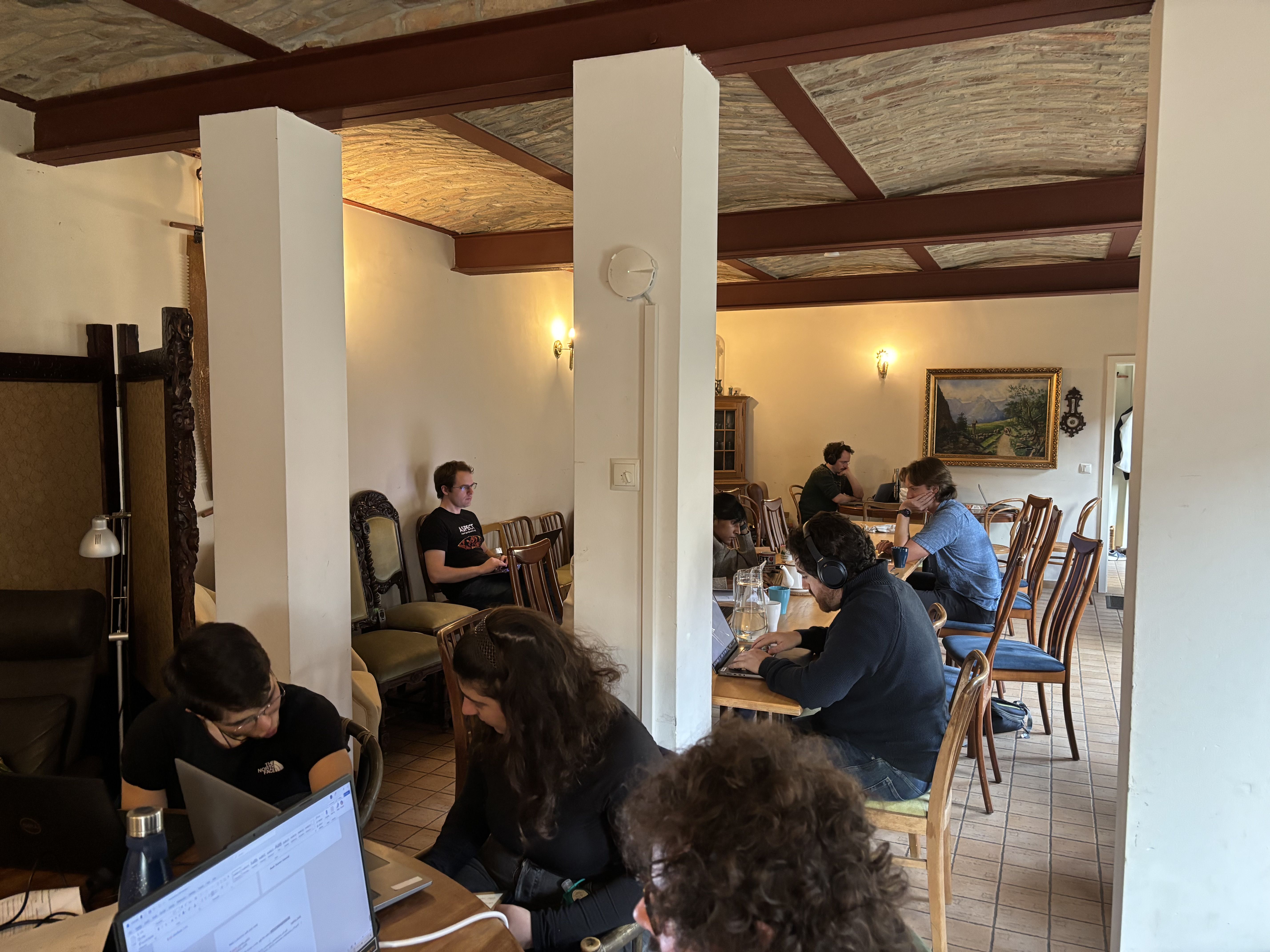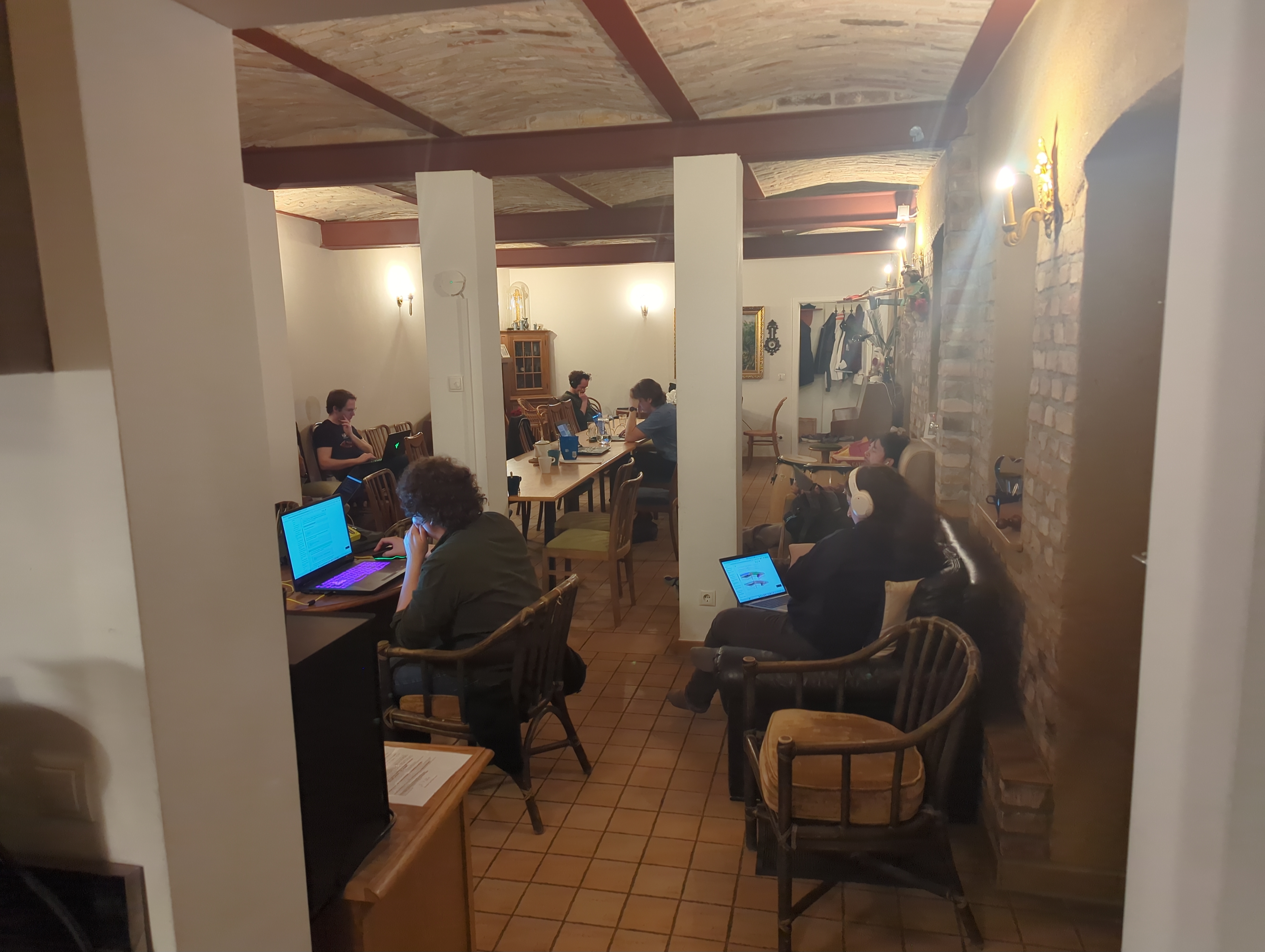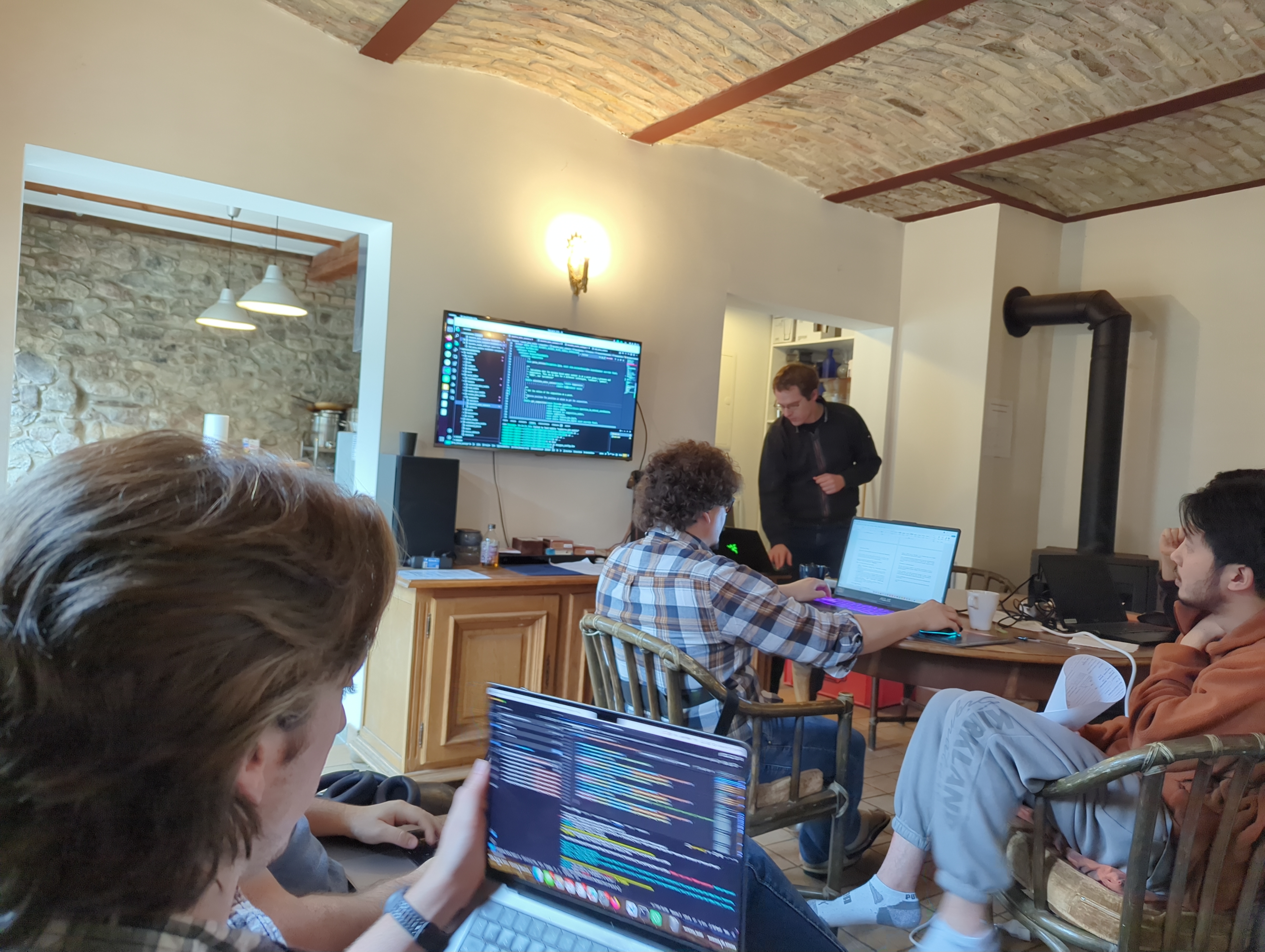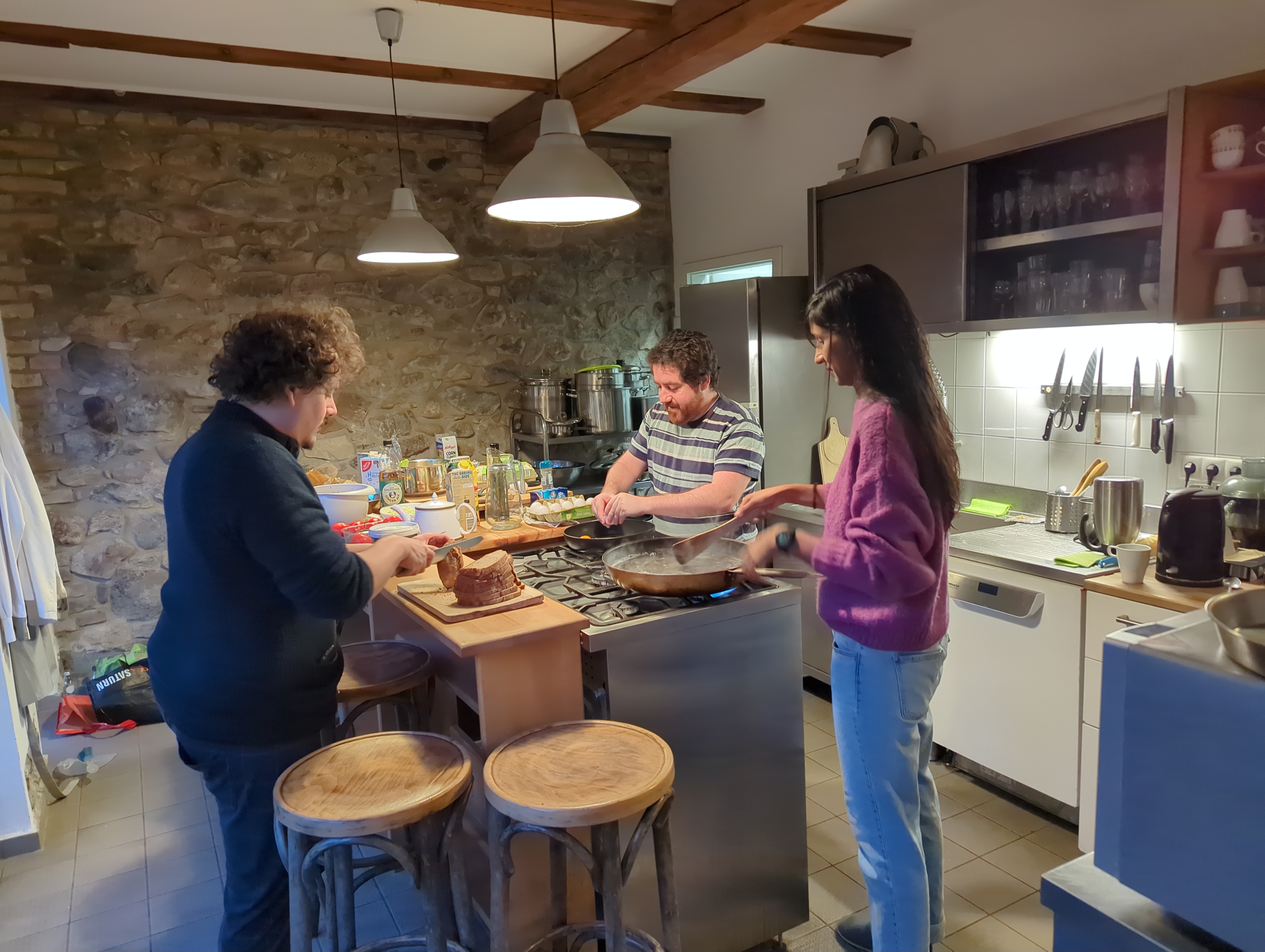Recap: Geodynamic World Builder Hackathon
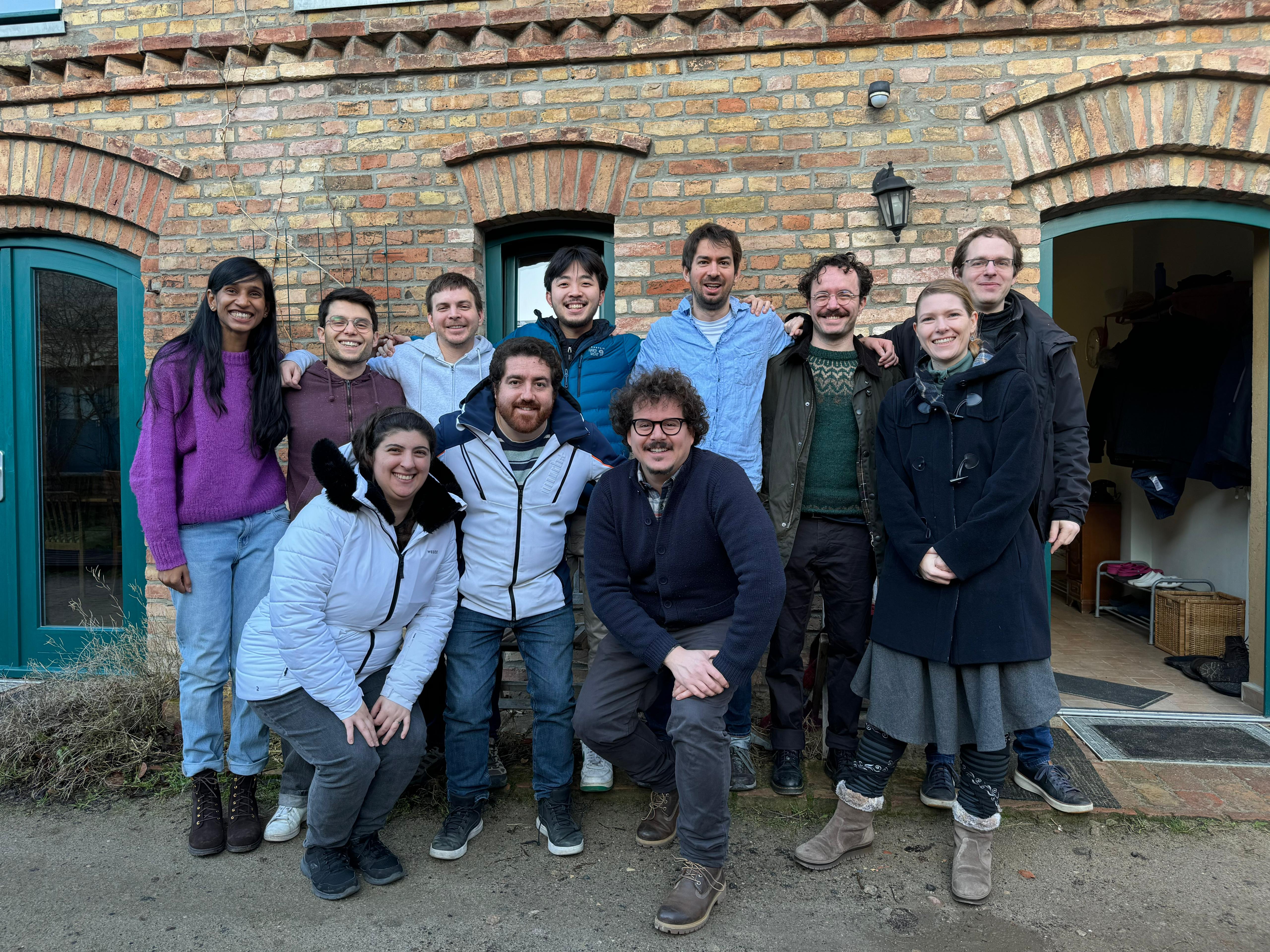
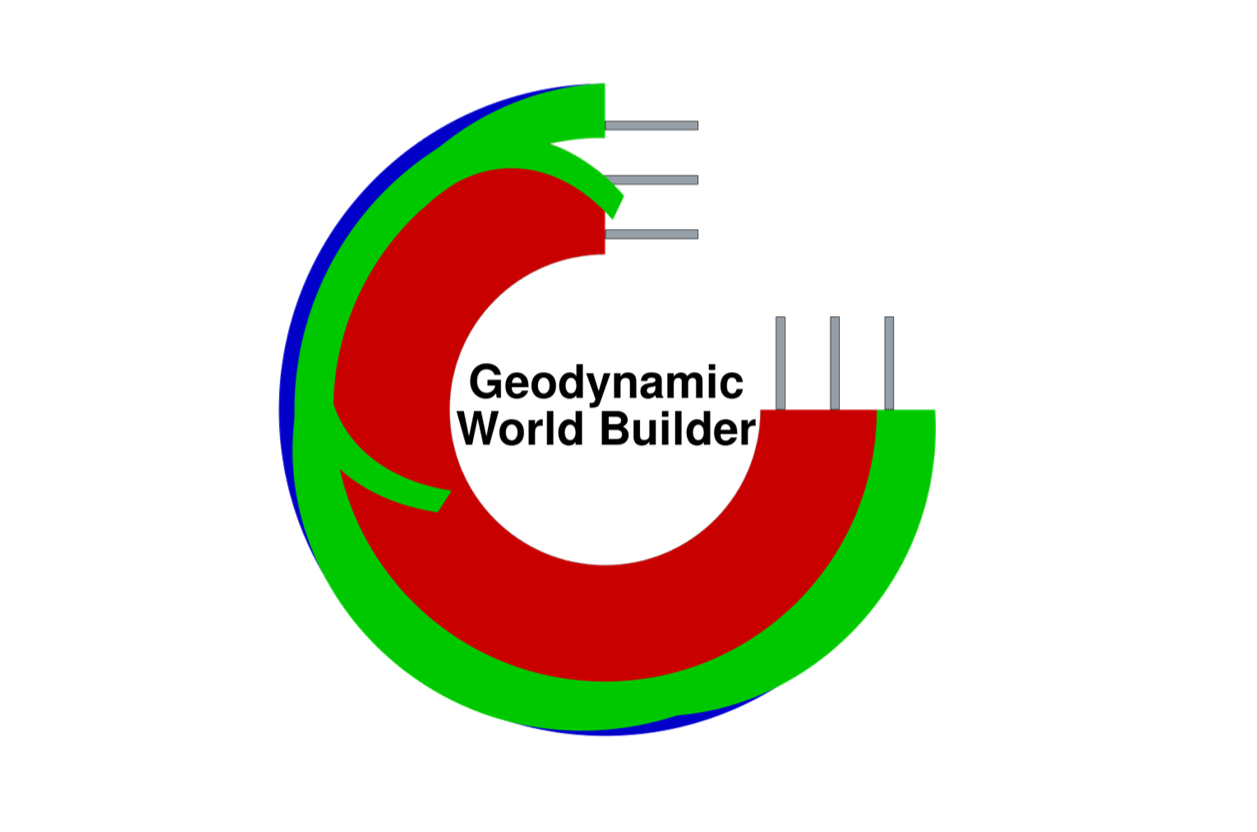
The project
In June 2025, 13 early-career researchers from four Geo.X institutions—joined by guests from GEOMAR and the US—gathered in Groß Kreutz (Brandenburg) for an in-person, five-day hackathon. The goal: enhance the Geodynamic World Builder (GWB), explore geodynamic modeling challenges, and foster cross-disciplinary collaboration.
What We Did
Day 1 kicked off with tool introductions, an overview of the GWB, and project planning sessions. Days 2–5 followed a productive rhythm: Morning check-ins, Focused hacking sessions, Spontaneous brainstorming and technical discussions and of course, communal cooking, shared meals, and time to reflect (and occasionally just have fun ;))
Explore the Projects
A range of ideas and improvements were tackled during the hackathon, see below. In general, you can follow all ongoing work and contributions via the GWB GitHub issues.
Acknowledgements
This hackathon was made possible through an ECS Community Grant awarded to Menno Fraters. For any questions, feel free to get in touch.
Projects worked on
GPlates is a software platform that allows users to visualize, analyze, and interpret plate tectonic reconstructions and geological data through interactive 3D models over geological time scales.
The communication between GPlates and Geodynamic World Builder is crucial for users to ran more complex models of the earth advancing our understanding of Earth's geological history by integrating plate reconstruction data, paleotopography, and paleomagnetic data in a single workflow. GPlates provides detailed models of past plate movements, which, when combined with World Builder, enable accurate representation of the Earth's surface evolution over time, including the positions of continents, oceans, and tectonic boundaries (and many more features). The Gplate GUI also facilitates the creation of interactive visualizations that could aid education and scientific communication.
3 new features were added:
1) GWB modelling using with local use of Gplate and its GUI.
2) GWB modelling using remote up-to-date plate reconstruction using Gplately
3) The use of plate velocity from plate reconstruction to initiate the GWB models with constrained slab dip and length, and thermal state of the oceanic domain (Work currently in progress)
The GWB doxygen documentation webpage was updated and improved to a modern design, which is mobile friendly. The automatic workflow to update the online version of the documentation was fixed so that it is now automatically rebuild whenever the documentation changes. Location of the online doxygen documentation: codedocs.xyz/GeodynamicWorldBuilder/WorldBuilder/index.html.
The world builder was integrated into the Geodynamic convection code CHIC (Noack et al., 2015). By adding the compiled World Builder as a static library, the Fortran wrapper functions can be used. Read-in of both the temperature and composition fields are implemented, serving as initial conditions for (local) mantle convection models.
Often, the initial thermal structure of oceanic plates in geodynamic models is computed based on the half-space cooling model. However, the thermal conductivity in the Earth’s mantle depends on temperature and pressure. This means that the error function can no longer be used to set this initial thermal structure, and it is more appropriate to instead have to solve a 1D diffusion problem with a variable thermal conductivity and density to compute the temperature distribution. Since this problem depends on several material properties that need to be consistent with the geodynamic model that the initial condition is used for, duplicating all these properties in the WorldBuilder is not a good solution.
Therefore, we wrote an external python script to be part of the WorldBuilder utilities that solves the 1D diffusion problem. The corresponding output can then be read into the world builder from a data file.
We have added an educational notebook in the Worldbuilder at $WORLD_BUILDER_SOURCE/contrib directory. This notebook briefly describes GWB, how to create a `.wb` file, plot the generated output. In the current example, the notebook plots the letters “GWB” as enclosed regions describing continental plates.
Created a cookbook that shows how to use the worldbuilder to create a subducting plate feature with hydrated lithologies
Implemented a method (simple for now) to define subducting plates using depth contours. Top figure shows a slab that is defined using 2 depth contours, bottom shows a different set of depth contours.
Create an interface for topography in worldbuilder. This allows for topography models to be called in the parameter file, and gives options to communicate a type of surface to coupled codes.
Create an interface and infrastructure for density in worldbuilder. This makes density into a property that can be defined by each feature through multiple different density models. At the moment, only uniform density can be prescribed.
Temperature (T) is a fundamental parameter in geodynamics because it controls buoyancy, rheology, and the water content of rocks. Modelling heat diffusivity is crucial to determine the lifetime of thermal anomalies in the mantle (e.g., subducting slabs and rising plumes).
The key parameter in heat diffusion is the thermal conductivity Lambda [W·m^-1·K^-1], which quantifies the flux of thermal energy transported into or out of an object. The total thermal conductivity Lambda_tot of silicates is the sum of two components:
Lattice thermal conductivity Lambda_lat, which quantifies heat transferred as acoustic vibrations of the crystal lattice (phonons); and
Radiative thermal conductivity Lambda_rad, which quantifies heat transferred as photon emission (radiation).
Both components of Lambda_tot depend on temperature (T), pressure (P), and composition (X). Most numerical models assume a pressure- and temperature-independent Lambda_lat, and neglect the contribution of Lambda_rad. This underestimation of Lambda_tot precludes the modelling of realistic heat diffusion.
During this hackathon, we implemented pressure-, temperature-, and composition-dependent thermal conductivity that includes both lattice and radiative components. This involved the development of a new interface in the ASPECT software for variable thermal conductivity, as well as the creation of a new thermal conductivity plugin. The equations of this plugin have been extrapolated from the experimental dataset of olivine (manuscript submitted).
(GWB) and the geodynamic, mantle convection code GAIA was carried out by Compiling GWB and including it into GAIA’s makefile as static library. Writing a GAIA module capable of reading the temperature field from .wb (GWB) file and setting it as initial condition into a GAIA simulation. Calling GWB module in GAIA’s input file and producing the first output to visualize temperature field imported from GWB.
- Learning the basics of GWB through the basic tutorial and documentation
- Setting up a full spherical 3D model of the Moon starting from a simple to complex configuration:
- Starting with building a 3D spherical grid and setting up a homogeneous mantle layer with the dimensions of the moon
- Adding a constant crust layer with different composition of 39 km above the mantle
- Including an initial temperature profile taken from typical lunar thermal evolution models (Laneuville et al. 2013)
- Including a circular-like feature that simulates the PKT region on the lunar nearside
Corona structures on Venus have been proposed to be driven by plume-lithosphere interactions. In order to understand what types of mantle plumes into the venusian lithosphere origin certain types of corona structures, it is necessary to conduct a regional scale study with a refined model. Modeling the complex shapes of one or several mantle plumes can be implemented into the Geodynamics World Builder (GWB). Learning how to use this useful tool to prescribe a thermochemical anomaly (mantle plume) in a three-dimensional model was done following the “Basic starter tutorial” and the example “Adding a mantle plume” provided in the GWB documentation. The definition of the world *.wb file can be informed by global models of Venus in terms of the properties at the defined maximum depth, at the crust-lithosphere boundary and at the surface, as well as the characteristics of the plume (shape, size, orientation, contrast temperature, etc). This setup could be easily adapted for an exploratory study of the influence of each parameter in the thermal evolution of the region.
